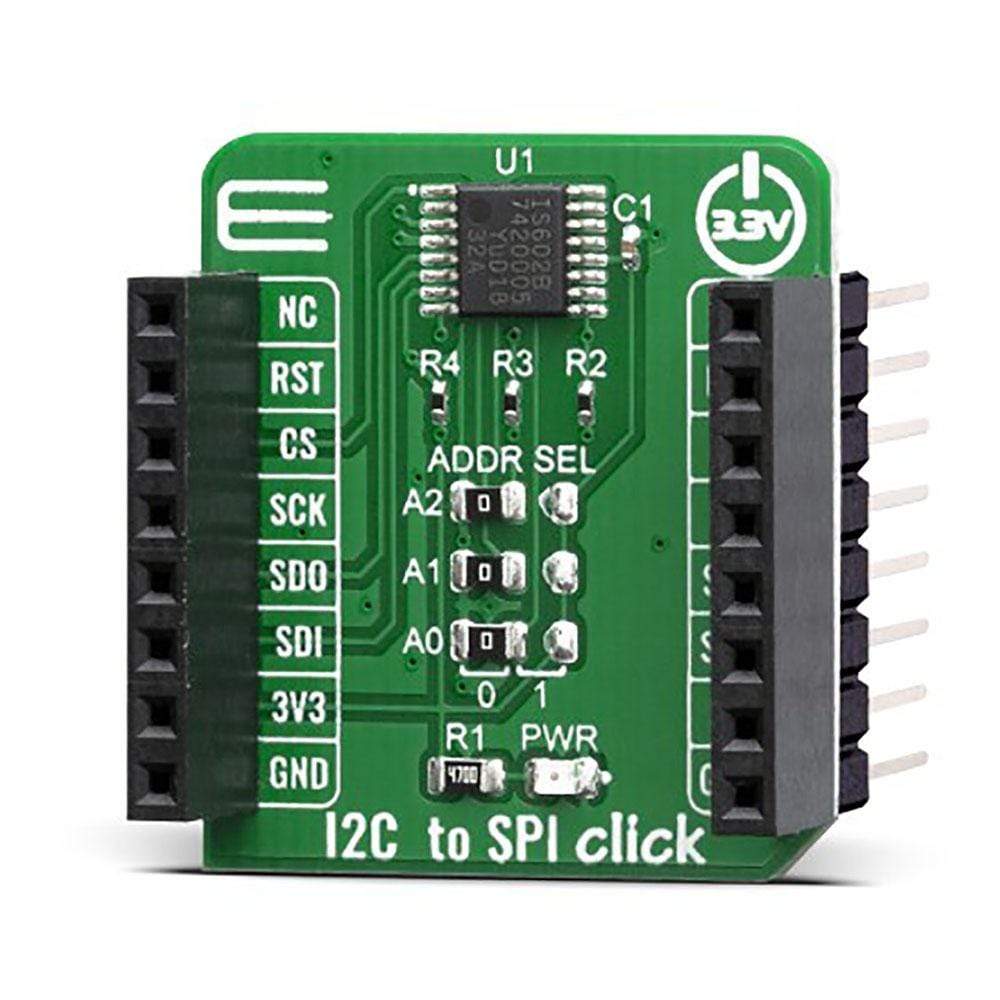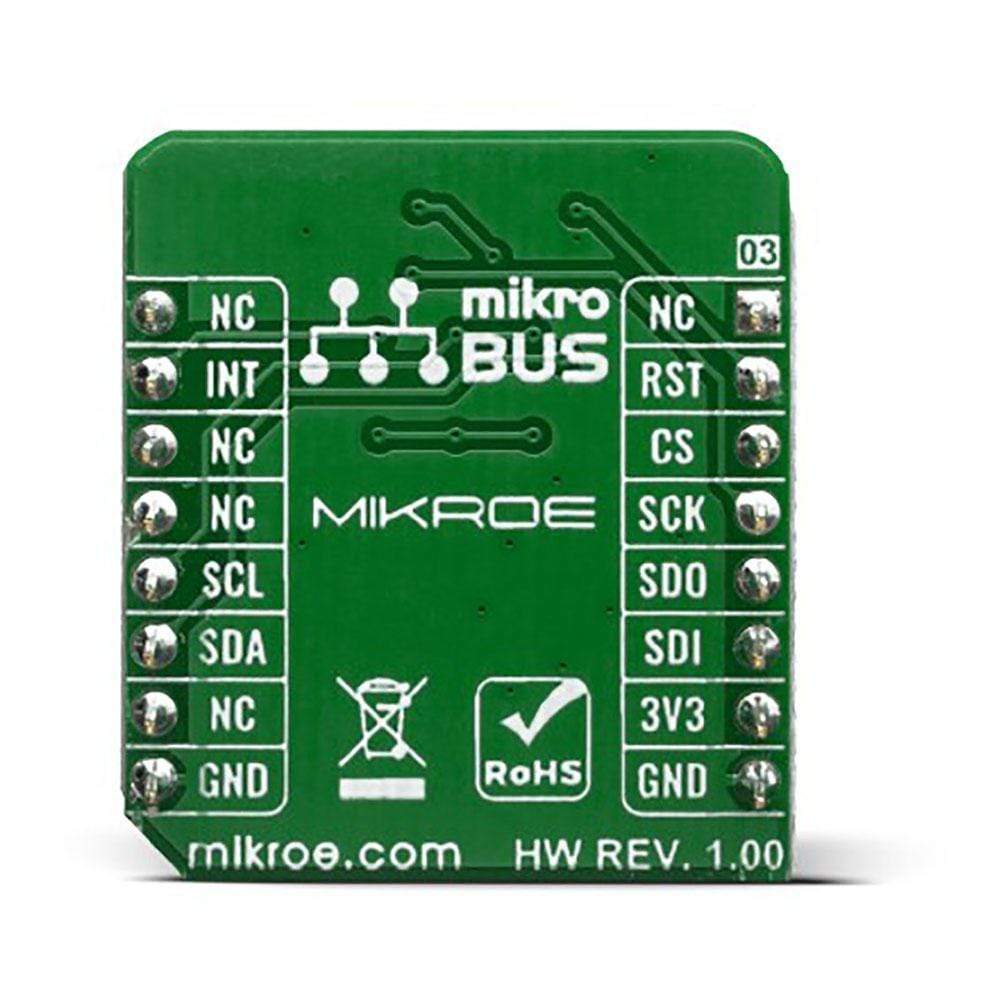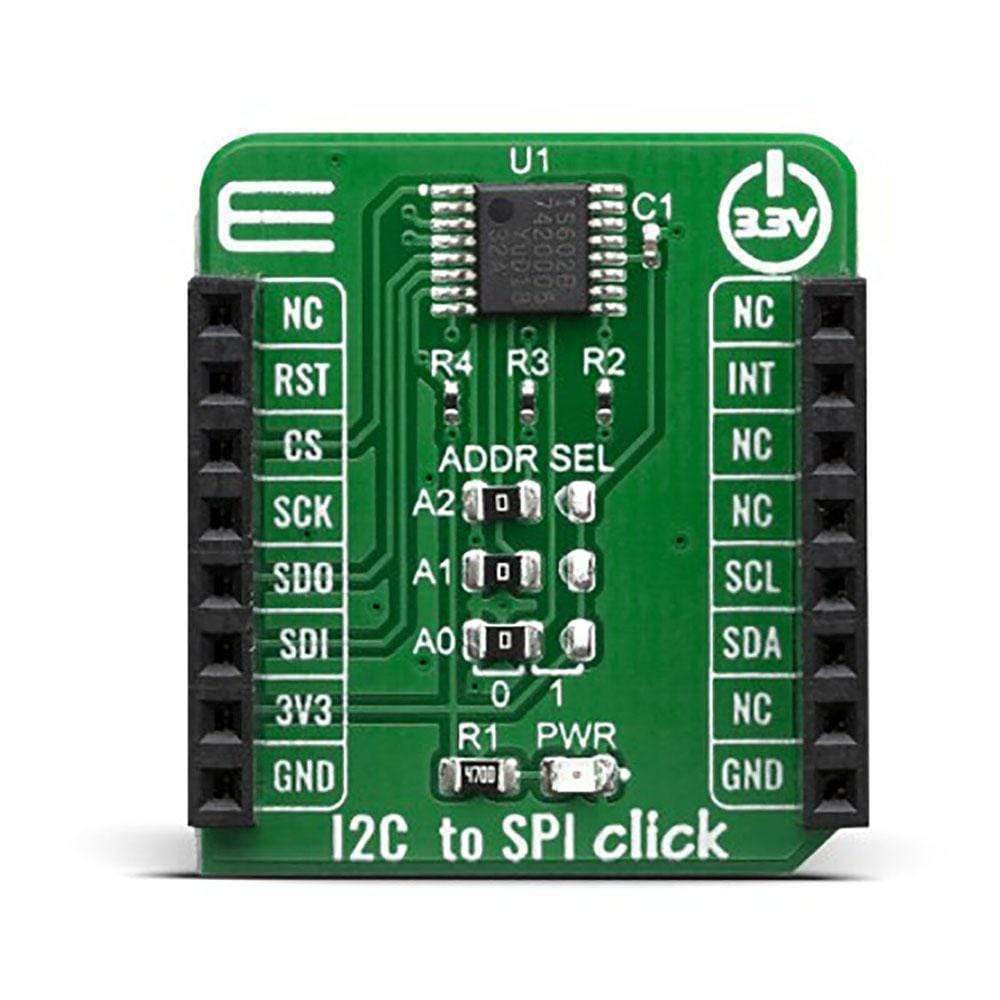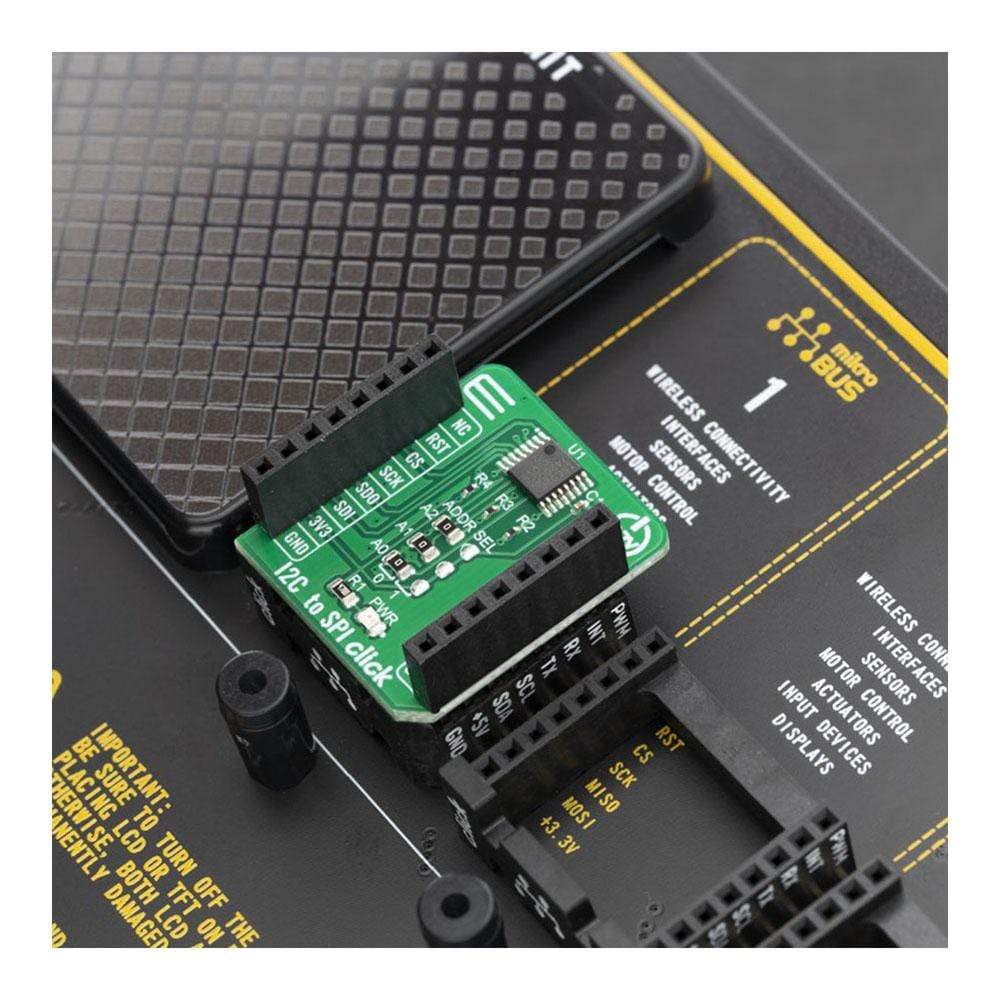



Overview
The I2C to SPI Click Board™ is an all-in-one solution that allows serving as an interface between a standard I2C-bus of a microcontroller and an SPI bus, which allows the microcontroller to communicate directly with SPI devices through its I2C-bus. It is equipped with stacking headers, so it can be easily connected. By offering an I2C-bus slave-transmitter or slave-receiver and an SPI master, this Click Board™ controls all the SPI bus-specific sequences, protocol, and timing. It also has its own internal oscillator, and it supports the SPI chip select output that may be configured as GPIO when not used.
The I2C to SPI Click Board™ is supported by a mikroSDK compliant library, which includes functions that simplify software development. This Click Board™ comes as a fully tested product, ready to be used on a system equipped with the mikroBUS™ socket.
Downloads
Das I2C-zu-SPI-Click-Board™ ist eine Komplettlösung, die als Schnittstelle zwischen einem Standard-I2C-Bus eines Mikrocontrollers und einem SPI-Bus dient, sodass der Mikrocontroller über seinen I2C-Bus direkt mit SPI-Geräten kommunizieren kann. Es ist mit Stapelstiftleisten ausgestattet, sodass es einfach angeschlossen werden kann. Durch das Angebot eines I2C-Bus-Slave-Senders oder Slave-Empfängers und eines SPI-Masters steuert dieses Click-Board™ alle SPI-busspezifischen Sequenzen, Protokolle und Zeitabläufe. Es verfügt außerdem über einen eigenen internen Oszillator und unterstützt den SPI-Chip-Select-Ausgang, der bei Nichtgebrauch als GPIO konfiguriert werden kann.
Das I2C-zu-SPI-Click-Board™ wird von einer mikroSDK-kompatiblen Bibliothek unterstützt, die Funktionen enthält, die die Softwareentwicklung vereinfachen. Dieses Click-Board™ wird als vollständig getestetes Produkt geliefert und ist bereit für den Einsatz auf einem System, das mit der mikroBUS™-Buchse ausgestattet ist.
| General Information | |
|---|---|
Part Number (SKU) |
MIKROE-3743
|
Manufacturer |
|
| Physical and Mechanical | |
Weight |
0.018 kg
|
| Other | |
Country of Origin |
|
HS Code Customs Tariff code
|
|
EAN |
8606018716913
|
Warranty |
|
Frequently Asked Questions
Have a Question?
Be the first to ask a question about this.




